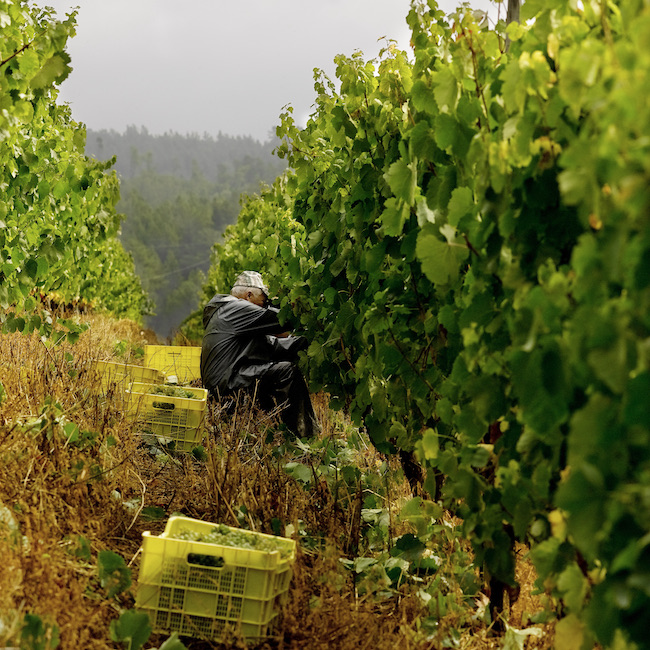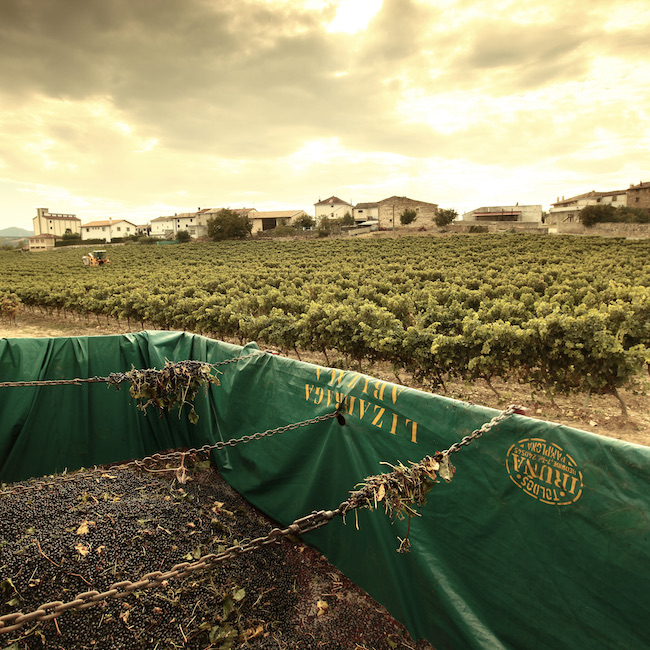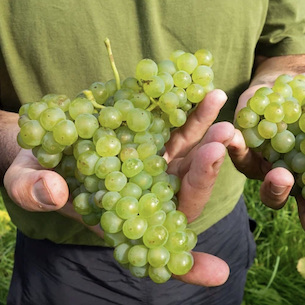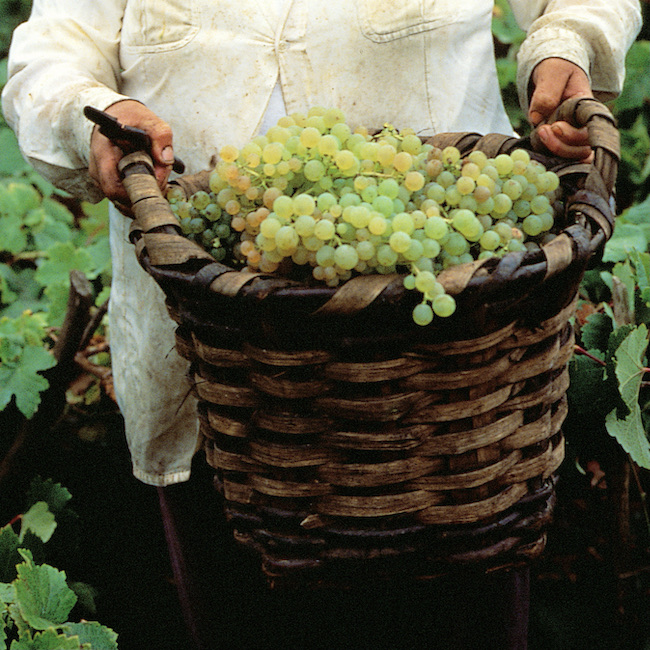by Patricia Langton
.png.transform/rendition-xs/image_image%20(1).png)
The year was certainly complicated throughout vineyards across Spain with unpredictable weather keeping winemaking teams on their toes. Where winter rains had been scarce vineyards came under significant stress and when rain finally did come it was sometimes torrential and coincided with high temperatures - the perfect recipe for fungal disease

by Patricia Langton
The year was certainly complicated throughout vineyards across Spain with unpredictable weather keeping winemaking teams on their toes. Where winter rains had been scarce vineyards came under significant stress and when rain finally did come it was sometimes torrential and coincided with high temperatures - the perfect recipe for fungal disease.
The spring was dry and cold with frost in some areas which can be beneficial for moderating yields. Northern areas experienced heavy downpours in May and June, allowing vine growth to advance well, yet rainfall continued to be remarkably scarce over in the east where hopes started to fade for decent yields.
The growing season entered a calmer phase in July without excessively high temperatures (unlike 2022) and continued into the first half of August. This was followed by far more challenging weather as temperatures soared to 40ºC accompanied by warm nights just when water reserves in the ground had run low.
When rain finally arrived in September, an early harvest was underway across Spain so typically there was a break until more favourable weather returned. Furthermore, while vineyards often needed the rain the timing was later than ideal in terms of fruit development and botrytis became an issue in some areas. For many there was a harvest of two distinct halves: before the rain and after, giving wines of different personalities in the bodega.
Once again higher altitude, later and cooler regions generally fared better this year as they were less affected by the heat and fruit was at an earlier stage of ripeness when the rain came and were therefore less likely to be affected by disease.
For winemaking teams there was a lot to manage from the reception of grapes, grading batches according to potential and quality levels. As María Barúa, enologist at Bodegas Lan in Rioja summarised: “It was a long, very complicated and very technical vintage in both the vineyard and the winery… an emotional rollercoaster.”

2023 harvest forecast: 34 million hl, grape and must (source: OEMV). This is a low harvest around 14% less than 2022.
Highlights from the regions
For regions such as Rías Baixas, Bierzo and Valdeorras in the north-west dry weather wasn’t such a concern indeed the harvest in all three DOs was more generous than in 2022. But the viticultural year presented challenges nonetheless and especially closer to the Atlantic coast.
At Bodegas Castro Martín (Salnés, Rías Baixas) Andrew McCarthy described a complicated year for Albariño: “We had the first wet winter for a while and then rain came at the wrong time in the spring so there were some issues with mildew. Summer was comparatively dry with some cloud and rain but not enough to do any damage though we had to watch carefully and it was important to thin the canopy”. His team started to harvest “quite early” on September 6th but had to break off due to rain while a shortage of pickers (throughout the DO) also made for a difficult and protracted harvest. The outcome was positive however, with the best quality from the first fruit to be picked and young wines described as “not as good as 2022 but better than 2021”.
In Valdeorras the best fruit often came from vines with good canopy management to protect fruit from strong sun and careful selection of the harvested grapes to discard raisined fruit. Meanwhile in Bierzo vineyards benefitted from enough rain and summer temperatures that were not excessively high allowing the thin-skinned Mencía to perform well. The resulting young wines show good freshness, balance and strong personality.
The weather was unpredictable and challenging in some regions across Castilla y León. Hail and frost in June together with a hot summer resulted in a less abundant crop for Verdejo in Rueda. The vintage also started early for most including Caserío de Dueñas where the “earliest ever” harvest started on 15th August (for Sauvignon Blanc). Here the aim was to retain freshness in the grapes and most of the fruit was picked at night to benefit from lower temperatures and avoid oxidation.
Meanwhile in Toro fruit quality was described as “extraordinary” and yields were also good thanks in part to more rainfall than the previous year. Tinta de Toro is the main variety here with some Garnacha while white varieties now include Malvasía and Albillo Real.
The harvest in Ribera del Duero is described by DO authorities as “one of the most complex harvests to date”. Frost struck the region in March and May while September featured heavy rains and low temperatures posing a risk to fruit but at the same time allowing grapes to fully develop after a very dry summer. This vintage is expected to offer very different wines and qualities according to where vineyards are located in Ribera del Duero.

In Rioja harvest dates were also early after very high temperatures - as high as 41.6 degrees on 23rd August - accelerated the ripening process, especially for Tempranillo which ripens relatively early. The weather took its toll on some vineyards scorching leaves and grapes. On a more positive note, as María Barúa commented: “unlike last year, this summer the heat did not cause such a marked drop in acidity” and for Bodegas Lan “there is great balance between acidity and alcohol”.
When rain came in September it was heavy, marking the wettest start to September for a number of years here, and as in many areas, there were two distinct stages: before and after the rain. Generally speaking higher, cooler areas fared better. The team at Ramón Bilbao concluded: “In Rioja Alta and (higher altitude) Rioja Oriental grapes reached perfect ripeness with higher yield and more concentration… there was also more balance between tannin and alcohol”. Generally speaking yields were higher than expected for Rioja thanks to the September rains.
The harvest was described as challenging in neighbouring Navarra with extreme weather including heat waves and torrential rain in some areas. Very careful consideration was needed to decide when it was the best time to pick each area and variety. Like last year picking started early - in mid August - and culminated with late-harvest Moscatel for the region’s sweet wines. The total harvest was 56 million kg, 4 million less than the previous year.
Moving to Aragón, a heartland for Garnacha, it was a particularly tough year mainly due to ongoing poor rainfall. In Campo de Borja, Cariñena and Calatayud yields were down significantly. The most extreme case was Calatayud with 40% less than the previous year, but with very good fruit quality from higher altitude vineyards. In Campo de Borja vineyards suffered from hail in June and an unusually wet October which made harvesting difficult in later-ripening vineyards.
However the picture was quite different in Somontano where almost half the DO vineyards benefit from irrigation. Here the crop was 10% higher than the previous year, but with lower yields in later-ripening vineyards. Cabernet Sauvignon, Merlot and Chardonnay accounted for most of the harvest.

Over in Catalunya more than two dry years took its toll on the total crop which was 21% down on last year with particularly low yields for Merlot, Cabernet Sauvignon, Tempranillo and Syrah. Most of the harvest took place in August and September thereby preserving acidity levels, indeed fruit was generally of a good quality despite low volumes.
Harvest dates in Montsant were the earliest on record. Here the crop was 30% down on the previous year (yields were particularly good in 2022). The main grapes harvested were Garnacha, Cariñena, Garnacha Blanca and Macabeo.
The pattern was very similar in Priorat due to the drought with some exceptions: Mas Doix, with vineyards in the fresher area of Poboleda, was fortunate to have some rain in May and June according to co-founder Valentí Llagostera who was pleased with more generous yields and good quality.
In Jumilla in the south-east, Bartolomé Abellán Hernández, enologist for Gil Family Estates, described extremely dry conditions throughout the entire viticultural year which were virtually without precedent. This proved to be very testing for the local Monastrell grape despite its strong resistance to long periods of hot, dry weather in this part of Spain. He witnessed “tremendous vine stress” with vines producing few clusters and tiny berries.
As a result yields were 50% lower than usual and grapes were picked around two weeks earlier than in a typical year. As for quality, the grapes harvested at this stage resulted in wines that are “less concentrated but very delicate with strong and attractive red fruit character”.
As in many areas rain interrupted the harvest allowing vines to recover but offer a very different “less expressive” fruit character for this producer in the case of fruit harvested in the second stage of the harvest.

The islands: DO Binissalem and Islas Canarias
* In DO Binissalem (Majorca) leading varieties Manto negro and Callet performed well and there were no significant setbacks due to very high temperatures in July or the August and September rains. Fruit quality was described as being excellent and yields were up by 12% on 2022. Plantings of traditional varieties are on the up while non-local grapes such as Syrah, Chardonnay and Moscatel are in decline.
* A particularly dry and hot year meant that harvesting started in early July in Islas Canarias making this region the first to harvest in the northern hemisphere. Over 1.5 million kg of grapes were harvested, mostly Listán Blanco and Listán Negro.
DO Cava and DO Jerez
* The report for Cava described this year’s harvest as challenging due to the extreme weather but generally there was “exceptional quality in terms of health and ripeness” and acidity levels suitable for Cava wines. Plots are now singled out for the production of higher quality Cavas de Guarda Superior following the introduction of this classification in 2022.
* Once again annual rainfall was well below average in Jerez but overall the weather was slightly more favourable than 2022 resulting in high fruit quality and heavier bunch weights. The total harvest was 49.9 million kg of grapes, 12.3% up on 2023.
Generous rainfall in June helped to relieve vineyard stress but that included isolated hailstorms which impacted on yields in Trebujena and Lebrija to the north of the DO. On the other hand unusually moderate heat in July, together with fresh nights, resulted in particularly good fruit from earlier ripening vineyards further inland.